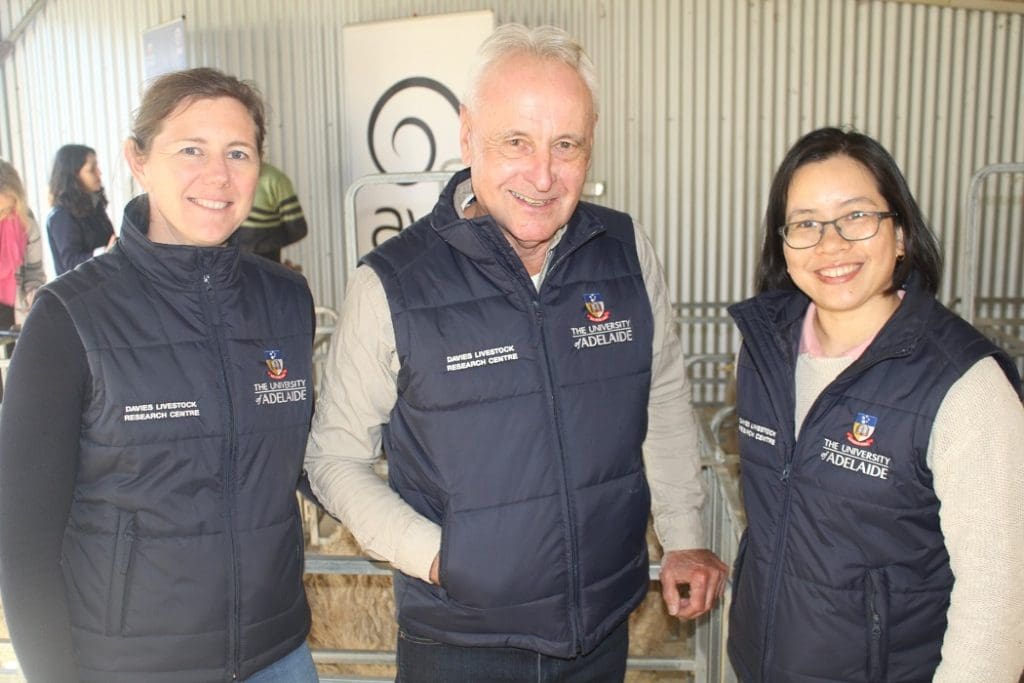
The University of Adelaide bioharvesting research team, from left, Dr Sarah Weaver, Prof. Phil Hynd and Dr Hue Thi Do.
A WOOL bioharvesting option for crossbred lambs with low value fleece could be first product of research to harvest wool without shearing, the University of Adelaide’s Professor Phil Hynd said at the International Wool Textile Organisation Congress in Adelaide last week.
“We’ve had discussions about that as recent as yesterday and the answer we think is yes, we think we can develop it.”
“It will probably just be a dose rate thing and depending on how coarse the wool is, we think that crossbreds can be made weak enough that enough of the wool will be weak that it falls off in the paddock over time,” he said.
“And that would be a gamechanger, that in itself, without anything related to Merinos, would mean that you would free up shearers from shearing wool that is not worth much, not worth the cost of shearing.”
Professor Hynd the prioritization of a crossbred lamb product has been discussed.
“The answer is a lot of the questions we are asking now, we’ll answer that one as we go, it just becomes part of the project anyway.”
He said it was most likely that a product for crossbred sheep would be the first product developed because no machine would be required to remove the wool.
“With this chemical that we are using, we are extracting very cheaply from seeds.
“I reckon the crossbreds and the composites could be the first cab off the rank here, but let’s see.”
The University of Adelaide professor told the IWTO Congress that sheep could have their wool harvested three weeks after they were injected subcuteaneously with a plant-derived chemical pellet that weakened the fibres.
Professor Hynd said the researchers were now 90 percent sure of the biology of the bioharvesting process.
“We are now talking with pharmacologists and they assure me that we can encapsulate the product in a slow-release form.”
Fleece removal would not involve cutting blades, nor need a shearing shed. There would be no injury to sheep and unskilled labour could be used, no second cuts and a better quality product, he said.
“The producer now has control, ho or she can decide when to shear, not when can we get someone, so it puts control back into the production system.”
Professor Hynd said Australian Wool Innovation are now just investing in project ideas to come with harvesting options.
“I’m a biologist and half of this project is not my skillset, it’s engineering, and image analysis and robots, possibly,” he said.
Professor Hynd put up a proposed timeline up that projected manufacture of an on-farm harvesting system, and chemical approval from the Australian Pesticides and Veterinary Chemicals Association, by December 2028. He said APVMA approval could take up to five years, but he hoped this could be fast-tracked.
“I try to dampen my enthusiasm and passion for this with reality and I know in research we’ve run into plenty of brick walls, but I’m feeling like we’ve jumped a lot of the hurdles and we’re in the final straight.”



I think this would be great if we could use it on rams.
Hi, I see so much upside for producers. Your approach is so good. Congrats to the top notch researchers.